Pompeii’s Parliament! Archaeologists discover electoral inscriptions in an ancient house caught in Mount Vesuvius’ devastating eruption
>
Archaeologists have discovered political graffiti among the ancient ruins of Pompeii, the ancient Italian city destroyed by a volcanic eruption.
They found that one building along the Via di Nola, one of Pompeii’s longest streets, had “electoral inscriptions” on the walls dating back nearly 2,000 years.
The paints appear to point to a candidate running for government office named Aulus Rustius Verus — who experts say may have bribed voters in exchange for bread.
They believe that Verus and his supporters could have been caught in the catastrophic eruption of nearby Mount Vesuvius in 79 AD.
The volcano released “pyroclastic streams” — fast-moving streams of gas and volcanic particles — that were so hot that they likely vaporized victims.
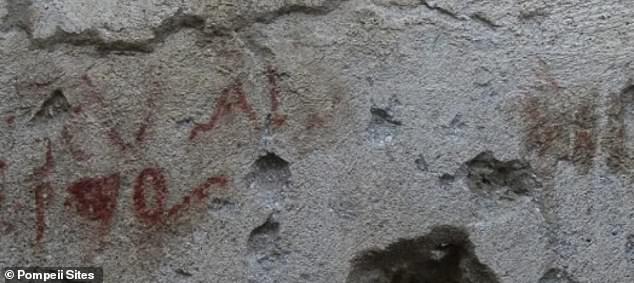
The inscriptions appear to support a candidate who was in the running for the role of Idyll, called Aulus Rustius Verus
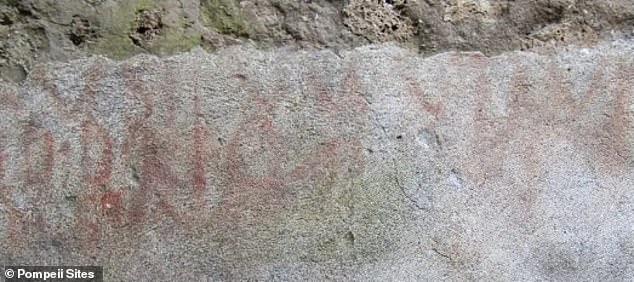
Archaeologists have discovered electoral inscriptions in an ancient house in Pompeii, which was famously destroyed by the eruption of Mount Vesuvius in 79 AD.
The new inscriptions were announced by the Pompeii Archaeological Park, the government-backed body that oversees the remains of the former city and ongoing excavations.
He describes graffiti as “the ancient equivalent of today’s election posters and postcards.”
Usually during the Roman period, political inscriptions trying to influence voters were placed on the outside of buildings, to make them visible to passersby.
The fact that these objects are found on the interior walls of the building is unusual, but not unexplainable.
“Usually, these writings are found on the exteriors of buildings, where people can read the names of candidates for city magistrates,” the Pompeii Archaeological Park said in a statement.
He added: “Presence inside the house was likely for events such as dinner parties to support candidates with the aim of promoting the election campaign to their guests.”
In this particular campaign, candidate Aulus Rustius Verus was running for the position of “aedile” – a type of magistrate responsible for the maintenance of public buildings.
Indeed, other inscriptions have been found around Pompey bearing his name, indicating that he was an important figure and was successfully elected.
Dr Andrew Sillett, lecturer in classics at the University of Oxford, told MailOnline the ancient figure was active in the city during the 1960s AD, but exactly what he was doing at the time of the eruption is pure speculation.
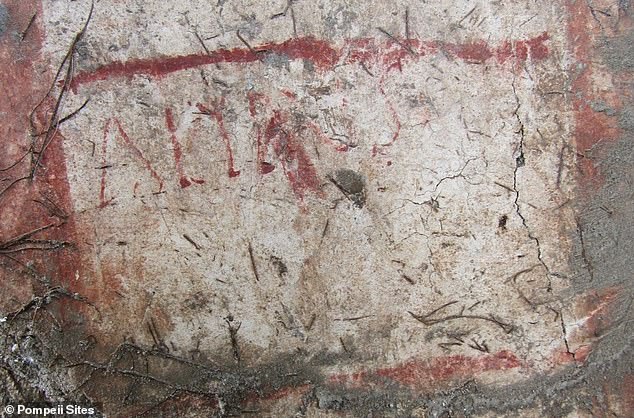
The building may have been the home of a supporter of the candidate and hosted events and dinners “for the purpose of promoting the election campaign.”
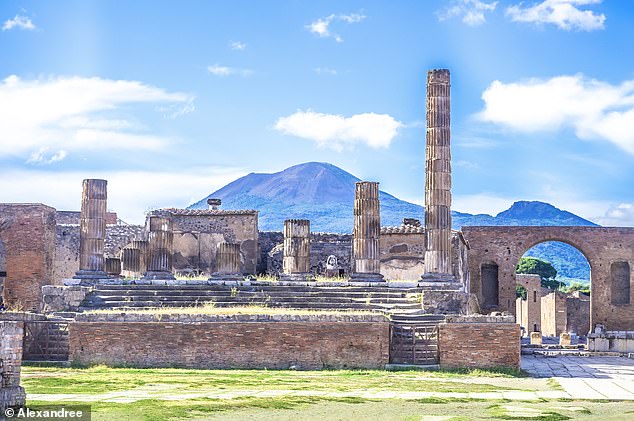
Go back in time 2,000 years ago, and Pompeii, located 14 miles southeast of Naples, was a bustling city. But on August 24, 79 AD, it was destroyed by the eruption of nearby Mount Vesuvius
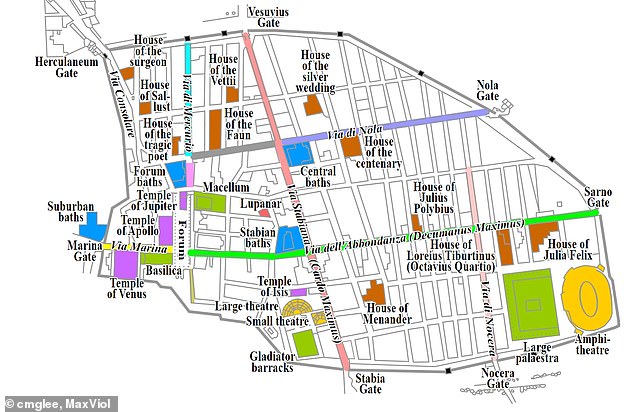
The inscriptions were found on the Via di Nola, one of Pompeii’s longest streets (shown in purple on the earlier map of the city).
Dr Sillett, who was not involved in the excavation, said: “It is suggested that he was the owner of one of the largest and most luxurious houses in Pompeii (the Centenary House).”
“Some people believe that his family had contact with the imperial family in Rome, and slaves may have been freed from the palace.
“I would say he was most likely alive at the time of the eruption, and there’s no reason to imagine he would have upped sticks and moved to a new city.”
New political inscriptions were discovered in the room containing the larium, the domestic altar of the house, and a shrine to the spirits.
The new analysis has made it possible to identify the last offerings made to the spirits in the arium – figs and dates, which were burned.
Also in the building are the remains of a large oven – an indication that it housed a bakery in the years before the deadly eruption in 79 AD.
The presence of a bakery at campaign headquarters may seem incidental, but researchers believe it sheds light on the political practices of the time.
Locals likely received bread in exchange for their votes, according to Maria Chiara Scpaccio, a professor of Latin at the Federico II University of Naples.
This questionable political practice is known today as “cross-voting” and is largely illegal, but at the time it was “the order of the day.”
It is believed that Aulus Rustius Verus financed the bakery so that it could distribute loaves to voters, capitalizing on the demand for bread.
“Aulus Rustius Verus would have understood immediately, when he was still struggling to become an Adele and in the midst of his election campaign, that the voter lives above all on bread,” Professor Scpaccio said.
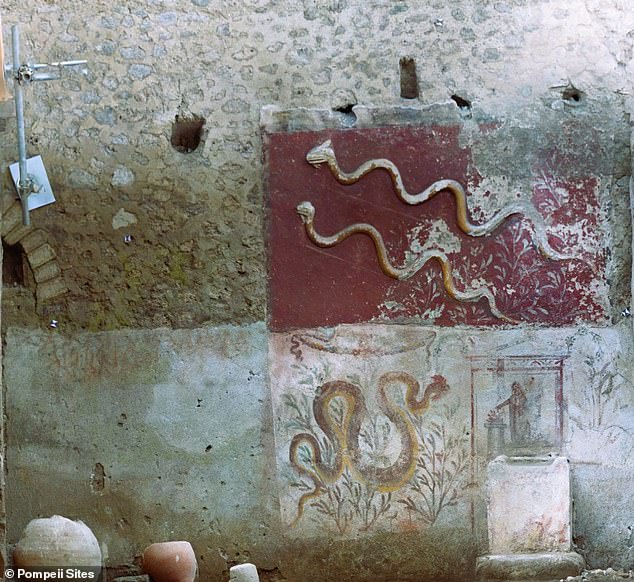
Political inscriptions were discovered in the room that housed the rarium, the domestic altar of the house, and a shrine to the spirits
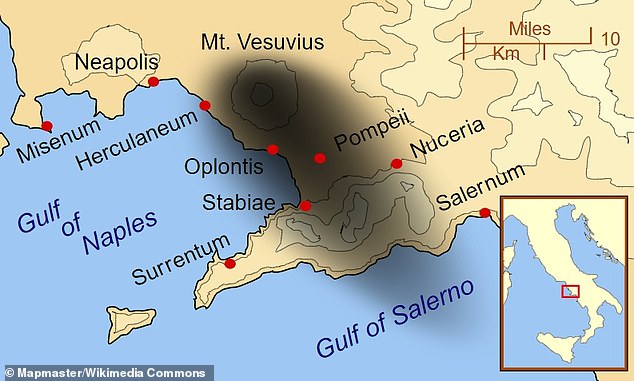
The map shows the location of Pompeii and other cities destroyed by the eruption. The black cloud represents the general distribution of ash and cinder
Further excavations aim to improve the preservation conditions of houses and shops along the Via di Nola – and perhaps reveal more about life at the time of Mount Vesuvius’ eruption.
The catastrophic event destroyed the settlements of Pompeii, as well as the settlements of Herculaneum, Torre Annunziata, and Stabia, killing up to 16,000 people in the process.
After the eruption, the bodies of the victims at Pompeii were preserved in a protective shell of ash before eventually decomposing.
Since the mid-19th century, the spaces these bodies left behind have eventually been filled with plaster casts to recreate their final moments.
(Tags for translation) Daily Mail



